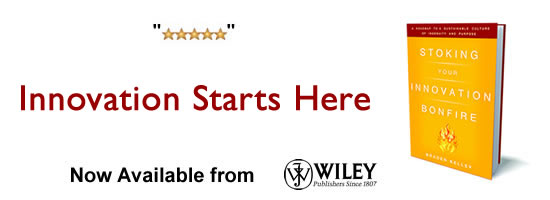SPQR Innovation

Modern travelers in Rome sometimes notice the abbreviation “SPQR†in various places throughout the city, such as manhole covers. Students of Latin know that this stands for Senatus Populusque Romanus, which translates to “The Senate and the Roman People.â€Â This phrase represents the government of the ancient Roman Empire and continues to this day to serve as a symbol of the Italian municipality of Rome. When we think of ancient Rome from an innovation standpoint, our thoughts typically turn to the familiar large-scale engineering feats of the Romans, such as incredible aqueducts (the Pont du Gard in France), enormous edifices (the Coliseum in Rome), or roadways that have survived for thousands of years (the Appian Way in Italy). Although these creations are worthy of innovation-related examination in and of themselves, the purpose of this article is to examine other, lesser-known examples of Roman innovation. The innovations we will explore in this writing are the breakwater at Caesarea in Judea (Israel), the water collection system for the mountaintop fortress at Masada (Israel), the location of amphitheaters in Roman cities and, finally, the political innovations of the Roman tribune Gaius Sempronius Gracchus.
Located to the south of the present-day Israeli city of Haifa, the ancient city of Caesarea Maritima was a port city built by Herod the Great, the King of Judea as appointed by the Romans, from 22 to 10 BC. Although the city was provided fresh water by an impressive aqueduct that delivered water from natural springs that were over 10 miles away, the most interesting innovation at Caesarea was in the construction technique used by the Roman engineers to create a breakwater and port on the Mediterranean Sea. At this location on the Mediterranean coast, there is a flow of water from south to north that carries sediment coming far away from the Nile River in Egypt. Lacking the modern tools that make maritime construction less challenging (massive barges, divers, caissons, cranes), the Romans built initial portions of the seawall in a way that took advantage of the natural flow of the sea at this location. With initial assistance from workers depositing rocks and concrete blocks, the sea essentially built the breakwater by itself over time. Rather than working against the sea, the Romans chose to let the sea work for them. This resulted in the creation of one of the most spacious harbors in the world at that time. According to the ancient historian Josephus Flavius, Caesarea’s port compared favorably to the Greek port of Piraeus near Athens, and Caesarea became a hub for shipping and supplies for the inland city of ancient Samaria and hosted the Herodian Navy. Modern visitors to the site today can see the enormity of the site and can grasp the challenges faced by the Romans who sought to transform such a desolate location into a functioning port city.
For innovation practitioner, the lesson of Caesarea is to find pathways to developing new ideas that mirror existing flows of ideas within an organization. Rather than trying to create an innovation program from scratch and pulling colleagues away from their regular work to focus on innovation, the practitioner may be better suited to study existing pathways of communication and, with a little facilitation, redirect those efforts towards an innovative outcome, just as the Romans took the existing flow of sediment from the sea and redirected it to constructive purposes.
Another Roman innovation lesson can be derived from the hilltop citadel of Masada, located in modern-day Israel adjacent to the Dead Sea. King Herod, who was quite busy as a builder in his lifetime, built Masada as a fortress palace south of Jerusalem to provide himself with a place of refuge to escape any possible revolts in his kingdom. Masada is located at the edge of the Judean desert and is an extremely arid location, receiving a tiny amount of rainfall per year (less than 2 inches). Masada is also built on top of a mountain that ranges from 400 to 1,300 feet high, so getting water to the living areas on the citadel is extremely challenging. However, when rains do strike the area, they can come in large amounts quickly (sometimes as flash floods) and are channeled naturally by the surrounding mountains, draining towards the Dead Sea. To adapt to this climate, the Romans dug giant cisterns into the stone in the fortress and cut multiple water canals (mini-aqueducts) leading from the mountains all around the fortress and directed those canals into their cisterns. When the small amount of rainfall occurred during the rare storms, the Romans efficient gathered this water and channeled it into their storage tanks, located part of the way up the mountain. Workers then carried smaller cylinders of water up the rest of the way and filled in larger cisterns on the top of the mountain.
For the modern innovator, the water challenge at Masada points to the importance of thinking about innovation as something that, rather than being a constant stream, is often a burst of intense and valuable activity that needs to be captured carefully and is frequently used at a later date. Having the mechanisms in place to capture this flow when it occurs is important, as is the need for a longer-term storage for ideas that, while they may not be useful immediately, could be of benefit to another effort in the future. The job of the innovation practitioner is to design the channels that funnel the ideas into a collection mechanism, curate the collection of ideas, then, at the appropriate time, move the ideas into a prominent location when they are needed.
A third innovation lesson from ancient Rome concerns the location of amphitheaters. On a recent trip to the Roman city of Jerash in present-day Jordan, our guide raised the question of why Roman amphitheaters are usually situated next to temples. One hypothesis was that because a temple was the site of greatest importance for a city and numerous people would congregate at the temple, a need developed over time to provide entertainment to pass the time for those waiting to get into the temple to see a priest or to make a sacrifice. People with spare time on their hands often seek entertainment, thus the amphitheater became a location to service this need of the townspeople and other visitors.
For the innovation practitioner, the notion of spaces where colleagues congregate with spare time is an important one from the standpoint of looking for opportunities to interact and guide innovation discussions. In our increasingly dispersed workplaces with more and more remote employees, this is becoming more challenging, but that may be why many building architects are designing spaces where workers must encounter people from other workgroups or divisions throughout the day. These encounters can result in the exchange of ideas that lead to new ways of thinking for all involved. Apart from assisting any facilities planning to ensure these opportunities for encounters exist, the innovation practitioner may also want to lead efforts to drive these interactions and make it easier for people to escape their workspaces and normal patterns to imbue greater creative thinking.
A final Roman innovation comes from the government official Gaius Sempronius Gracchus, who served as a tribune from 123 to 122 BC. Gaius is thought of as one of the most innovative Roman officials and his new thinking includes creation of an early form of food stamps, public purchasing of grain, distribution facilities for food, identity checking (to ensure only appropriate citizens are receiving government benefits), pre-emptive measures to avoid famine with the variability of Mediterranean harvests, giving the accused the right of appeal for death penalty sentences, outlawing of bribery, land distribution to the poor, exporting citizens to overseas areas to expand the empire, creating rules for Roman officials operating abroad, and providing citizens with redress for abuses by these officials. Each of these political innovations is worthy of investigation in its own right, but one anecdote from Gaius’s life is particularly interesting. According to his biographer, Lucius Mestrius Plutarchus, Gaius made a memorable gesture when he was addressing the Roman Senate. The configuration of the Senate hall had the Senators seated together on one side and, directly opposite, the common people of the city had gathered in an open plaza in the Forum to hear the speakers. Those speaking before Gaius chose to face the Senators while speaking with their backs turned to the people. Gaius made the decision to face the open plaza and the people while giving his speech, effectively turning his back on the Senators. According to Plutarchus, this made a “revolutionary†point and linked Gaius to the people and away from the oversight of the Senators.
For the modern innovation practitioner, the lesson of Gaius Gracchus is to think about one’s audience at all times and direct discussions to the appropriate audience. When presented on an innovation topic in front of a client or colleagues, we often focus on the Senior Executives in the room, often at the expense of the other participants in the meeting who are sometimes just as influential in terms of making a proposed innovation program a success. We either literally turn our backs on the non-Executives in the room by focusing our attention only on certain people, or figuratively do so by concentrating only on these individuals. The lesson from Gaius Gracchus is to focus on the larger audience as well as the leadership to ensure that our message is delivered as broadly as possible.
Sources:
Mary Beard, SPQR: A History of Ancient Rome (New York: Liveright Publishing Company, 2015)
https://www.britannica.com/place/Caesarea
https://en.wikipedia.org/wiki/SPQR
https://en.wikipedia.org/wiki/Appian_Way
https://en.wikipedia.org/wiki/Masada
Wait! Before you go…
Choose how you want the latest innovation content delivered to you:
- Daily — RSS Feed — Email — Twitter — Facebook — Linkedin Today
- Weekly — Email Newsletter — Free Magazine — Linkedin Group
 Scott Bowden is an independent innovation analyst. Scott previously worked for IBM Global Services and Independent Research and Information Services Corporation. Scott has PhD in Government/International Relations from Georgetown University.image credit: bgr.com
Scott Bowden is an independent innovation analyst. Scott previously worked for IBM Global Services and Independent Research and Information Services Corporation. Scott has PhD in Government/International Relations from Georgetown University.image credit: bgr.com
NEVER MISS ANOTHER NEWSLETTER!
LATEST BLOGS
How To Stay Connected to Your Co-Workers as a Digital Nomad
The digital nomad lifestyle has grown dramatically in recent years. The number of digital nomads has increased by 42%…
Read MoreCarbon neutrality: what is it, how to achieve it and why you should care
When sustainability is on the agenda, you’re likely to hear many terms mentioned that you may or may not be…
Read More


